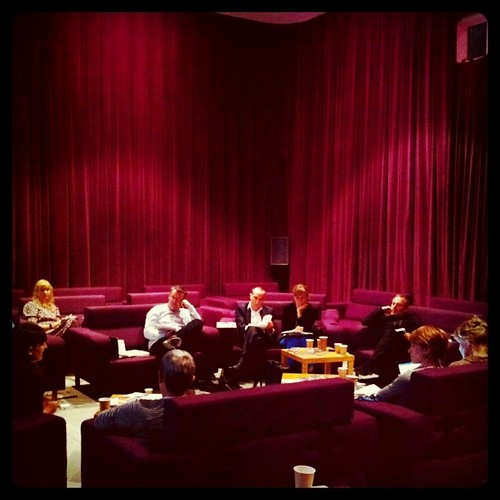I am attending and speaking at The Finnish Institute in London organised Community TV Expert Meeting, held at FACT Liverpool. This is a roundtable event trying to promote cooperation and best practises of Community media.

One idea forwarded during the day is to look back at community media of 70s and 80s. Curation and social identity through pirate media stations gained traction in these centuries. So we argue that, putting power in the hands of citizens will be one of the first choice for curators and media.
Community television is a throwback to a time when cable technology was new and the web was not yet born. It allowed anyone to create a program that could be seen on cable. Community television was the youtube of its day; but things have changed. Downloading and streaming have precipitated a complicated restructuring of the television industry, brought on in part by new viewing habits. Traditional TV now seems to be on the wane. But there are some things that are harder for the internet to replace.

Most television takes more than one person to make. The internet cannot replace the studio space, hands-on training and possibilities for in-person collaboration and mentorship that community television allowed for. It won't replace the sense of place provided by a community production studio; a space where people can gather, work, learn and create together.
We are at a critical moment when traditional media ownership is more concentrated than ever, and yet we have perhaps the most participatory medium in history at our fingertips. As such, citizens need access to media literacy, knowledge and media production skills more than ever before. Community media centres--modeled on the idea of recreation centres and local libraries--may be a crucial piece of the digital divide puzzle
Finally an nice overlook of Liverpool from the rooftop of FACT.


No comments:
Post a Comment